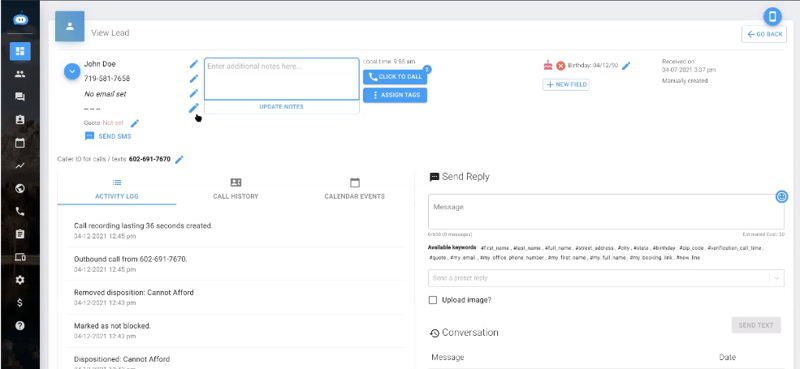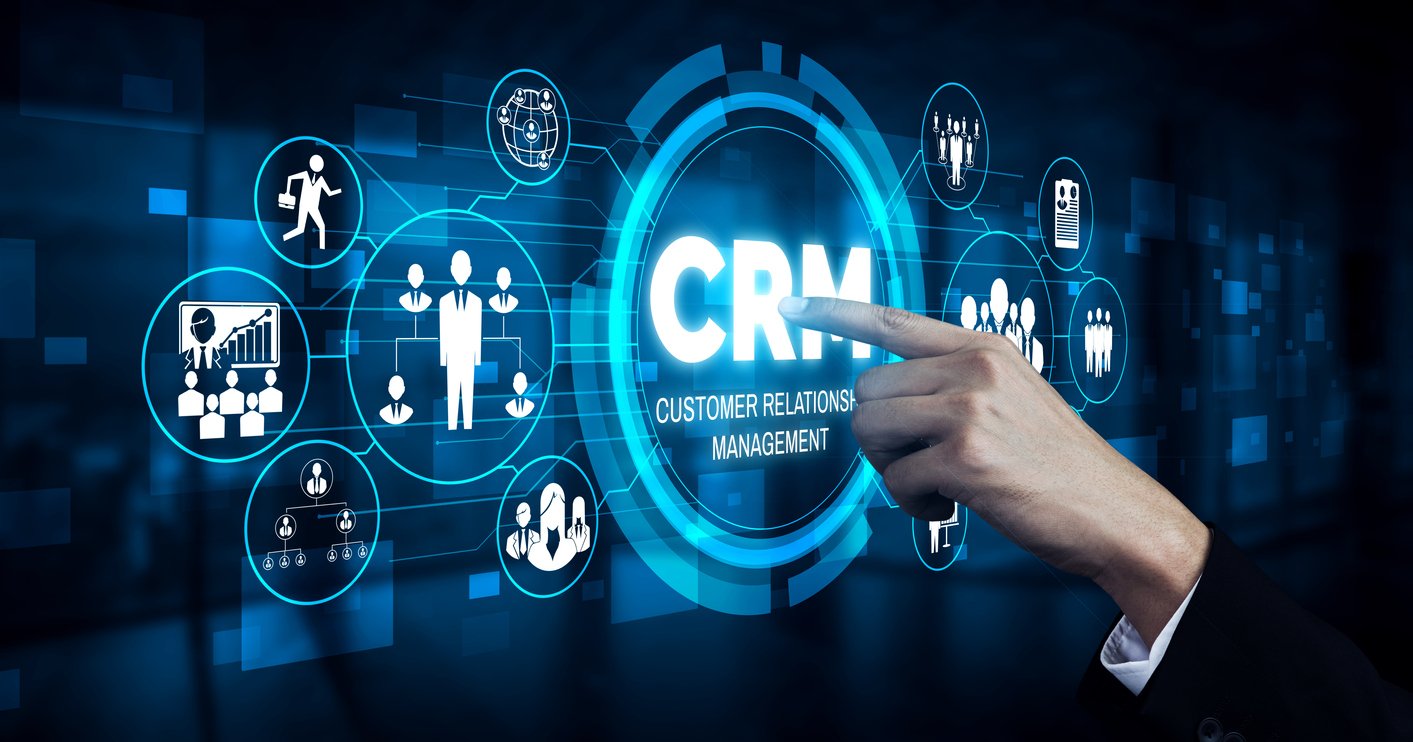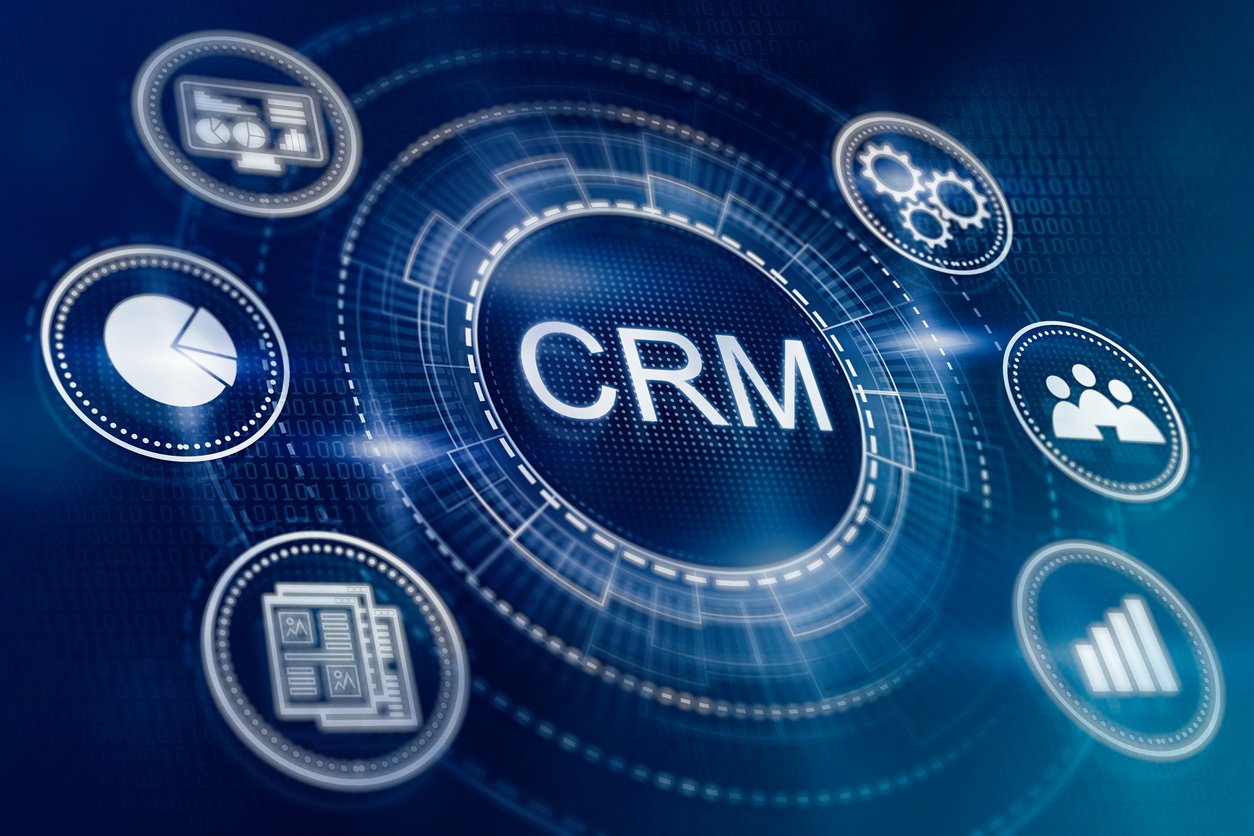
5 Sales CRM Strategies to Optimize Sales Teams
 Updated on
Updated on
 By Robins Dorvil
By Robins Dorvil
Robins Dorvil
With over 7 years of experience in the insurance industry, 4+ years as an Account Executive at Ringy CRM, and 17 years as a Creative Real Estate Inves...
learn more
Robins Dorvil
With over 7 years of experience in the insurance industry, 4+ years as an Account Executive at Ringy CRM, and 17 years as a Creative Real Estate Inves...
Table of Contents
Table of Contents
In a perfect world, every sales team would be motivated, productive, and confident.
Even if you’ve worked hard to make your sales process rock-solid, if your team is still using spreadsheets, manual contact lists, and different calendars to manage their leads and customers, then that efficiency can only go so far.
And really, it’s 2023, you know there’s got to be a better way.
Why not work smarter and not harder with some serious future-proofing? Automate processes that can be automated, and bring everything together on one platform. That’s real efficiency.
A sales CRM can give you that, and much more. And the best part is, it’ll help your salespeople sell more because they’ll have more time to do so.
Getting a CRM for your sales team is an investment worth making. Let’s dig deeper into why.
What is a Sales CRM
A Sales CRM is a software system that optimizes the sales process with customer-focused tools and information. Every interaction with a customer is tracked and managed by the sales CRM, from phone calls to filling out forms on your website, maximizing a salesperson’s time and giving them the ability to view all the company’s information about a customer or lead.
The ability to automate processes like drip campaigns, lead management, and more helps your sales team focus less on administrative tasks and more on selling.
In other words, a sales CRM simplifies the sales process, making your salespeople more efficient and effective with their customer and lead interactions.
5 Key Benefits of Using a CRM for Your Sales Team

Sales and CRM might go together like milk and cookies, but to understand why a CRM is so beneficial for a sales team, we have to understand a salesperson’s daily workflow and how a CRM improves that workflow.
Salespeople are busy. They juggle connecting and maintaining relationships with existing customers and new customers, while at the same time nurturing and connecting with leads. In today’s connected world, customers also expect timely responses and attention from their salespeople - something that can be difficult to promise if you’re dealing with lots of customers at one time.
A sales CRM is a perfect tool for all of the challenges a salesperson faces daily. With the click of a button or the touch of a screen, The sales CRM can show the salesperson an overview of any customer or lead they wish, making day-to-day nurturing and maintaining customer relationships much easier and more efficient. In short, sales and crm go together like bread and butter.
Let’s take a look at 5 key benefits of a sales CRM for your sales team specifically:
1. Optimize Your Sales Process with Automated Lead Management Workflows
Without a sales CRM, the typical cycle for a sales team to obtain leads is through marketing, where they’ll create a campaign that generates leads through channels like email, social media, or a website form. This data goes directly to marketing, who then organizes it and sends it to the sales team so they can determine the lead quality and follow up with each lead directly as necessary.
With a sales CRM, marketing is still creating and executing campaigns that gather leads, but the rest of the process is automated. Here’s an example:
|
Lead gathering |
Lead data management |
Lead reminders |
|
Leads are automatically gathered by the CRM and sorted into groups or categories based on channel (where the leads came from), location, industry, business type, or any other criteria your heart desires. |
The sales team can view lead data at any time within the CRM’s searchable database. |
Reminders to contact leads can be set, or certain leads can be assigned to certain salespeople. |
You can even integrate Ringy’s CRM with lead vendors to get more specific information about your leads.
While all this is happening, the sales CRM is also tracking the sales team’s calls, texts, and emails with leads and customers, so sales managers can determine where and when processes need to be improved.
2. Sell From Anywhere

Sales teams are mobile, and they need their tools to be mobile with them. Most CRMs have cloud capabilities and come complete with mobile apps for both Apple and Android, allowing salespeople to work from anywhere.
3. Identify Opportunities for Cross-selling and Upselling
With a sales CRM’s 360 degrees view of customer accounts, a salesperson can quickly identify upselling or cross-selling opportunities, both driving sales revenue, and increasing customer satisfaction.
For example, a customer is due for an upgrade on their smartphone that they got through a local cell phone company. Because the salesperson can see the customer’s entire account along with billing history, they realize that the customer is consistently paying more than the cost of their cell phone plan every month by using more data than the plan they're on includes, as well as long-distance calling. By pointing this out to the customer, the salesperson can put the customer on a higher-capacity data phone plan, plus add on a feature that saves the customer on long-distance calls.
4. Facilitate Team Collaboration
Because customer data is all in one place on a sales CRM, different teams throughout your company can see the same information and be on the same page regarding a customer.
One great example of how a CRM can facilitate team collaboration is with sales and marketing teams. Let’s say sales notice that a lot of great leads are coming from LinkedIn. Marketing can then pivot their lead generation efforts and put more time and resources into marketing campaigns on LinkedIn, which in turn generates more quality leads for sales.
5. Get Sales Reports and Forecasting

A CRM can allow salespeople to have a better understanding of their performance and goals through tracking. A CRM like Ringy provides a dashboard where salespeople can see current and historical information on everything to do with leads: call and SMS history, current and previous meetings, and communications they received (such as automated emails and texts).
Seeing this information allows a sales rep to see specific examples of their performance in different situations, and in turn, gives them a better understanding of their overall performance. Sales managers can also use this data to see trends and set team or individual sales rep goals.
Who Should Use a Sales CRM?
Any industry that does sales, either B2B or B2C, can benefit from using a sales CRM. Sales cycles and processes are different for every industry, but chances are a sales CRM can be beneficial for your business in some way.
For instance, here are some common points that most businesses are always looking to improve:
- The need to track and manage customer data
- Streamlining communication between different departments and teams
- Process documentation
- Ways to produce accurate and easy-to-read sales reports in a shorter period
Given the right setup and integrations, a CRM can help with all of these challenges and more.
5 CRM Sales Strategies to Implement Right Away
Whether you’ve made the decision on a CRM or not, these are examples of excellent strategies that you can implement for your sales team immediately once you get your CRM up and running.
1. Outline Your Sales Process
You might have a rock-solid sales process in place already, where your sales team runs like a well-oiled machine, converting those leads into paying customers at a steady pace.
If so, that’s awesome, but a CRM can still improve your sales process.
Start by asking your sales team where their pain points are - examples could be anything from spending too much time on administrative tasks to problems keeping track of customers.
Once you have those pain points identified, look into how your CRM can help you negate them.
As an example, let’s say your sales reps are struggling with keeping on top of customer interactions, where they can’t remember what was said during a customer conversation. A CRM can help by keeping track of conversations and interactions automatically.
Ringy can show the sales rep a complete overview of a specific customer or lead’s interactions, so the rep can get up to speed on where the customer is currently before contacting them.

2. Decide KPIs
Once you’ve determined how your CRM can help you with identifying your sales process, you can align your KPIs to measure whether those processes are delivering results.
For instance, if part of your sales process is improving upsells and cross-sells, then a KPI to measure could be average units per transaction or units per customer.
You can also look at more general KPIs to see your sales team’s overall performance, such as:
- Monthly sales growth
- Sales growth year over year
- The average number of leads closed versus leads received
- The time it takes to close a lead
- The average revenue per customer
3. Reduce Administrative Tasks with Automation
Save your sales reps time by figuring out which tasks are eating up their time and if those tasks can be automated. Zapier, which is a common automation tool that can be integrated with Ringy, can help you implement automations that match your sales processes.
For example, let’s say a new lead comes in from marketing. You can set an automated process to notify your sales reps (or a specific salesperson) about that lead through email, text, instant messaging, etc. so they can act on qualifying that lead as soon as possible.
Another big way automation can help save time is by generating sales reports. Instead of sales reps having to manually enter data, the CRM can track metrics of your choosing and can be set up to automatically send a report to you based on an imputed schedule.
4. Organize and Prioritize Incoming Leads
A sales CRM, such as Ringy, offers a crucial advantage by helping sales teams efficiently manage their leads. Our CRM's Sales Pipeline feature enables teams to organize and prioritize incoming leads effectively. Here's why this matters:
|
Function |
Description |
|
Streamlined Lead Management |
With Ringy CRM, you can centralize all lead information in one place. This eliminates the chaos of scattered data and ensures that no lead falls through the cracks. |
|
Clear Visual Pipeline |
The Sales Pipeline feature provides a visual representation of where each lead stands in the sales process. This clarity allows sales reps to focus on leads that are most likely to convert, increasing efficiency. |
|
Lead Scoring |
Ringy also allows you to set up lead scoring criteria. This means leads are automatically assigned scores based on their engagement and fit with your ideal customer profile, helping your team prioritize their efforts. |
|
Automated Reminders |
Never miss a follow-up again. Our CRM can automate reminders for your team, ensuring timely contact with leads and preventing them from going cold. |
5. Use Automatic Responses to Engage with Leads Immediately
Sales CRM platforms like Ringy provide the capability to create automated email and SMS responses, allowing sales teams to promptly engage with leads as soon as they express interest. This instant engagement is crucial in capturing the prospect's attention and moving them along the sales funnel.
Moreover, with the introduction of the new SMS legislation in the US, known as A2P 10DLC, it's important to adhere to the regulations surrounding SMS marketing. This legislation aims to regulate application-to-person (A2P) messaging to curb spam and ensure a better user experience. To navigate these regulations effectively, businesses can leverage tools like Twilio, which not only assist in compliance but also offer solutions to optimize SMS engagement.
For more detailed information on A2P 10DLC and how Twilio can aid in compliance and SMS communication enhancement, you can visit the Twilio website.
What to Consider when Choosing a Sales CRM

When you’re choosing a sales CRM for your sales team, here are some key considerations to keep in mind:
1. Price
The price of implementing a CRM can be more than just the monthly fee. There can be costs associated with onboarding, integrations, data preparation, and more. Before you decide on a particular CRM, make sure you completely understand all the costs involved.
According to Active Campaign, CRM implementation fees can be anywhere from $1,200 to $5,000 depending on the CRM and what needs to be set up.
With Ringy, onboarding and agent coaching are included in every subscription, so you don’t have to worry about those extra costs impacting your bottom line.
2. Usability
Nobody wants to use software that’s not user-friendly or doesn’t meet their needs properly. Before you decide on a sales CRM, ask yourself the following usability questions:
- Does this CRM do what I need it to do?
Answering this question may require a bit of research so you can match CRM features to usability scenarios. For example, if you want to have the ability to record phone calls to aid with coaching.
- Does this CRM integrate with the apps I use every day?
If your CRM of choice integrates with apps you use every day, then you’ll have the added benefit of reducing the back-and-forth between applications while still being able to use those applications like you normally would. For instance, if Google Calendar is integrated into your CRM, any calendar updates or changes you input would be automatically shown in the CRM interface. - Will my sales team actually use this CRM? This is a tough question because while some people embrace change, others prefer doing things the way they’ve always done it. It’s important that all your salespeople use the CRM for lots of reasons, such as being able to pull accurate data. Having a solid sales process in place alongside a good onboarding process are two ways to help with adoption.
3. Features
Every CRM comes with its own features, and it’s important to take the time to understand those features and whether they will work for your business.
Here are some popular sales-focused features that you can look for in a CRM:
- Appointment booking. For example, if you work in the insurance industry, an insurance CRM with verification calls might be a really useful feature to have. An example would be if a customer wants to purchase an underwritten product that requires an insurance underwriter to verify them before purchasing, an appointment can be set up in the CRM with complete information for the underwriter.
- Click to call software. If your business does a lot of manual dialing of phone numbers, click-to-call software can be a gift from above to save you (and your fingers) a lot of time and energy.
- Automatic drip campaigns. A drip campaign is when you send a specific group of leads messages strategically to keep them engaged. The most popular types of drip campaigns are welcome (like welcome emails or texts), abandon cart (for e-commerce, if a customer puts an item in their cart and then leaves the website), and nurture (focuses on turning leads into customers with things like discounts, special offers, etc.)
- Pipeline management. What if you could have a complete visual overview of your sales pipeline from start to finish? If your sales CRM can manage your sales pipeline, it helps prevent leads from falling out of your sales funnel and gives you a better understanding of how to improve if they do.
- Mobile-friendliness. With salespeople on the go, it’s important that your CRM is mobile-friendly. Most good sales CRMs have a mobile-friendly application and an interface that remains the same whether you’re using a computer or mobile device.
4. Analytics

Good sales reporting and analytics are essential for sales managers and salespeople alike to understand how sales revenue is generated.
A CRM with a custom sales reporting dashboard that allows you to easily generate reports is key. A good sales report gives you an overview of metrics and analytics that you care about in one convenient place so it’s easy to present and refer to later.
In terms of actual reporting stats, Ringy’s sales management software blog highlights some metrics you should pay attention to:
- Churn rate (the rate at which customers stop doing business with you)
- Deal velocity (the speed in deal negotiation to close)
- Sales rep activity
- Performance against a sales forecast or goal
Summary and Key Takeaways

We’ve given out a lot of information, so here’s a quick summary of what we discussed in this article:
A Sales CRM optimizes your sales team’s performance by tracking customer and lead data, giving access to reporting and analytics, and having all the information they need in one place.
Here are some key takeaways:
Key Benefits for your sales team:
- Optimizing the sales process and workflow
- Sell from anywhere
- Team and department collaboration
- Sales reports and forecasting
CRM strategies to implement immediately:
- Outline your sales process
- Decide KPIs
- Reduce administrative tasks with automation
What to consider before choosing a sales CRM:
- Price
- Usability
- Features
- analytics
If you’re convinced that a sales CRM is right for you, contact Ringy now for a free demo.

Skyrocket your sales with the CRM that does it all.
Calling? Check. SMS? Check. Automation and AI? Check. Effortlessly keep in touch with your customers and boost your revenue without limits.

Take your sales to new heights with Ringy.
Sales in a slump? Ringy gives you the tools and flexibility you need to capture leads, engage with them, and turn them into customers.
Subscribe to Our Blog
Enter your email to get the latest updates sent straight to your inbox!
Categories
Related Articles



































































































